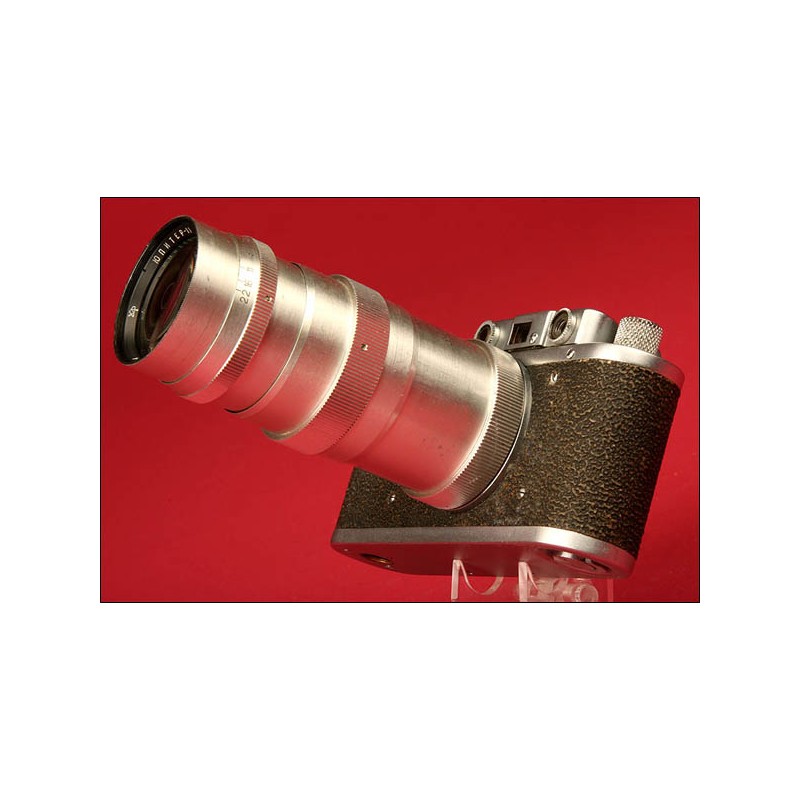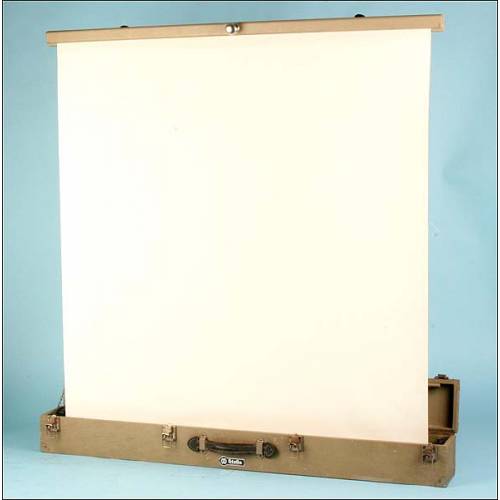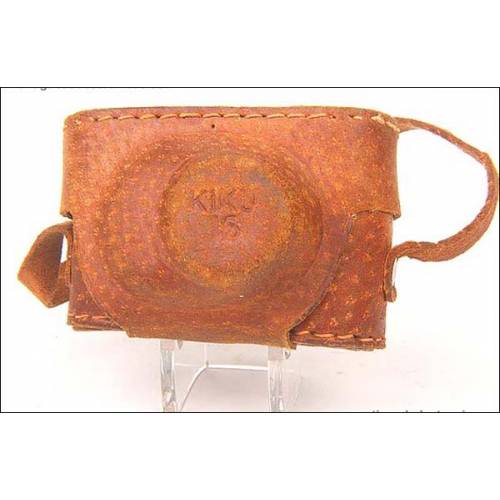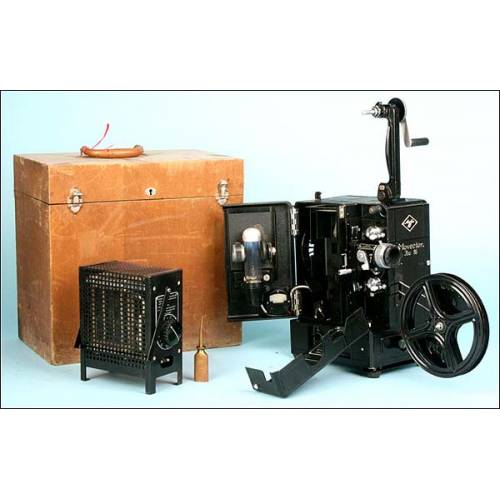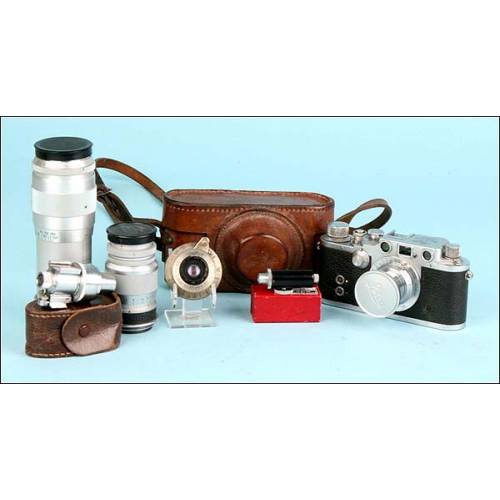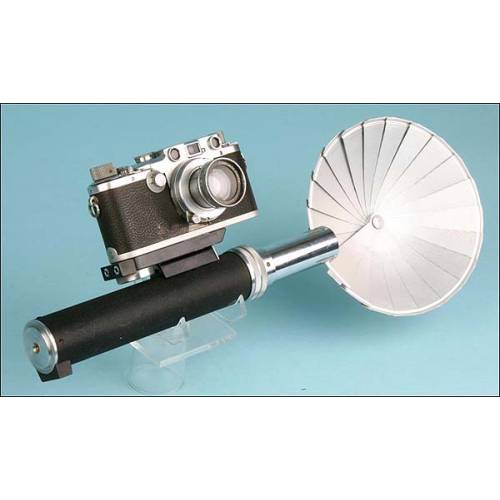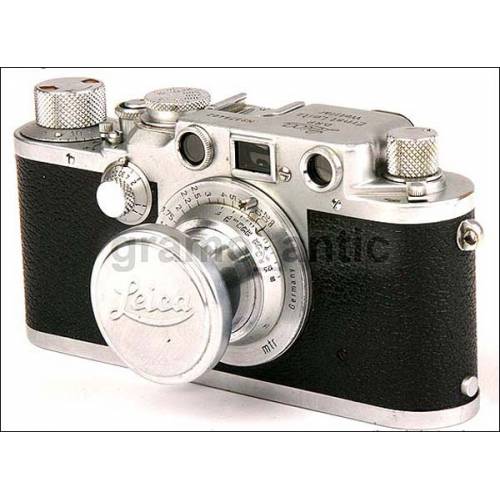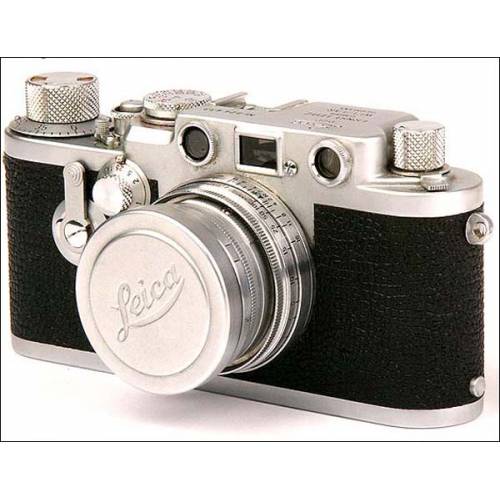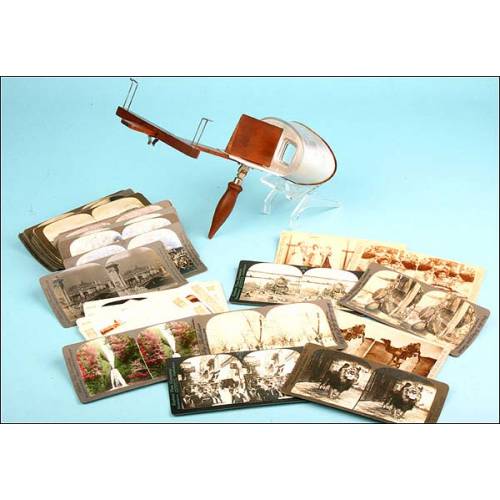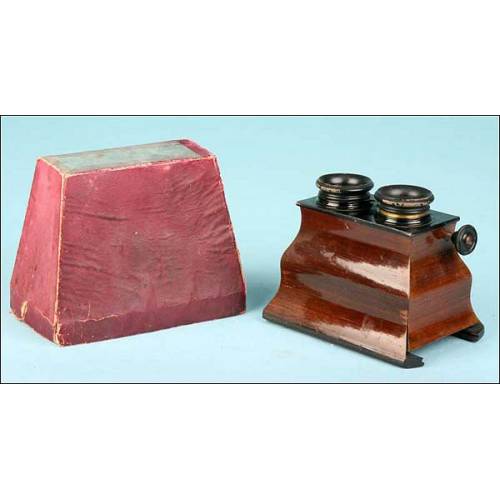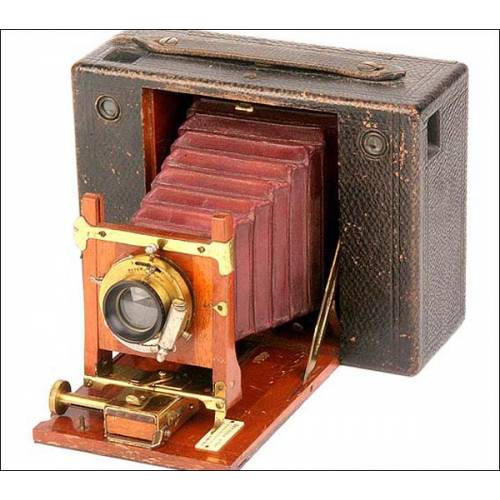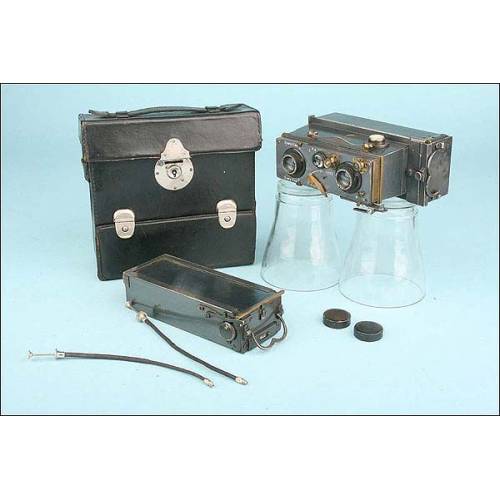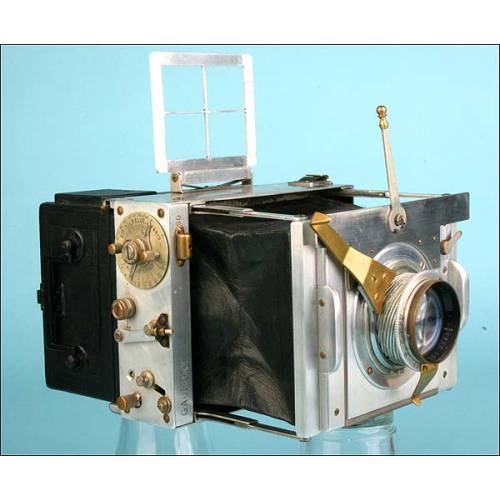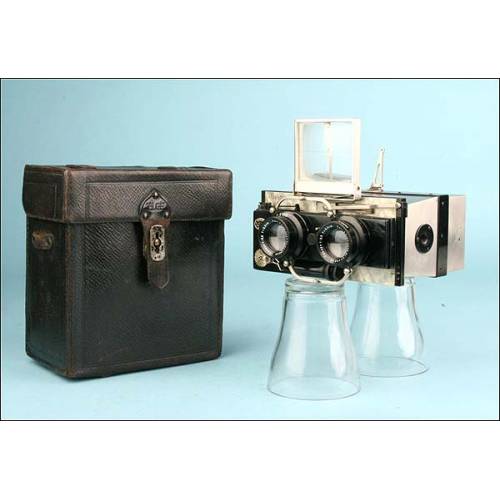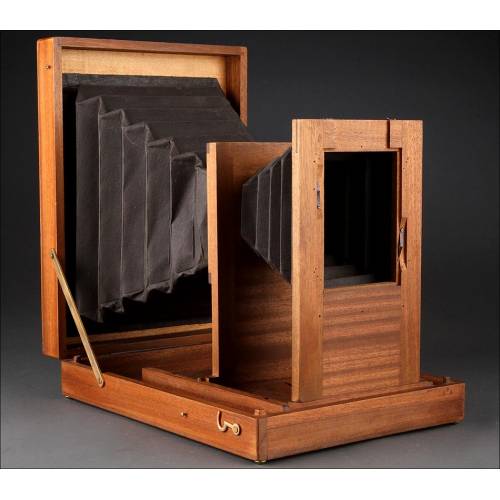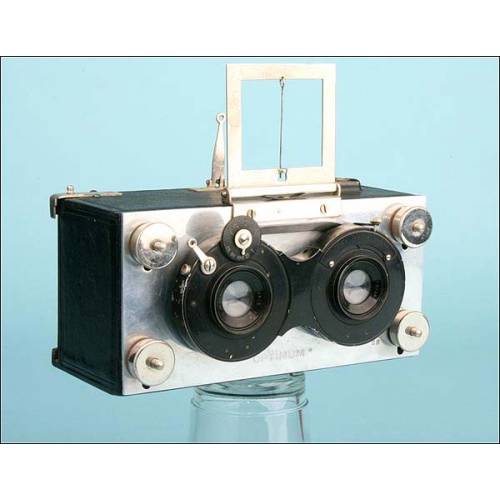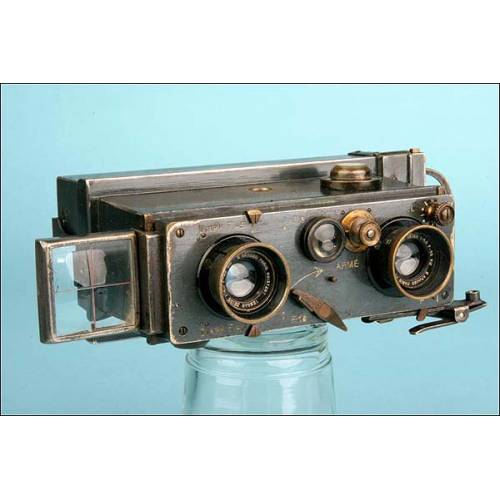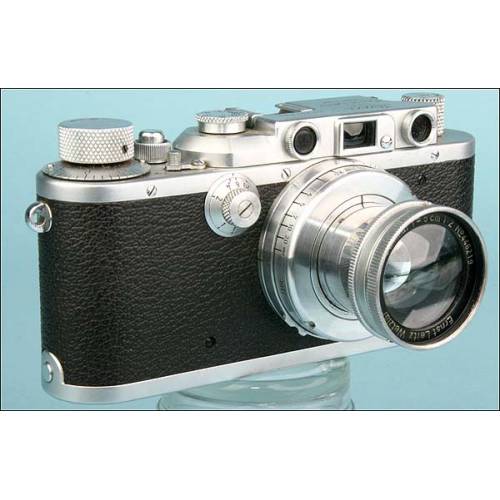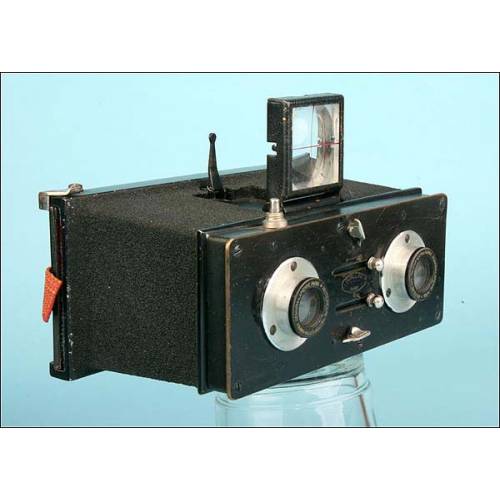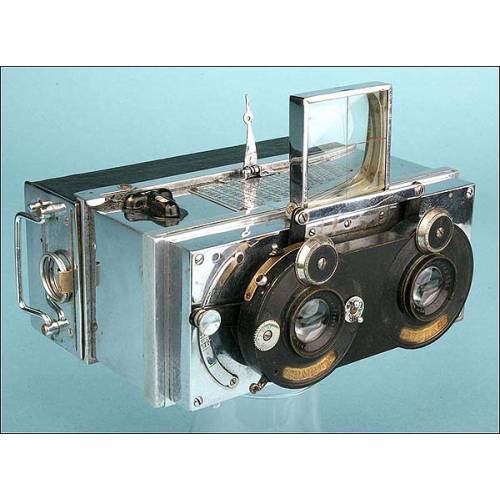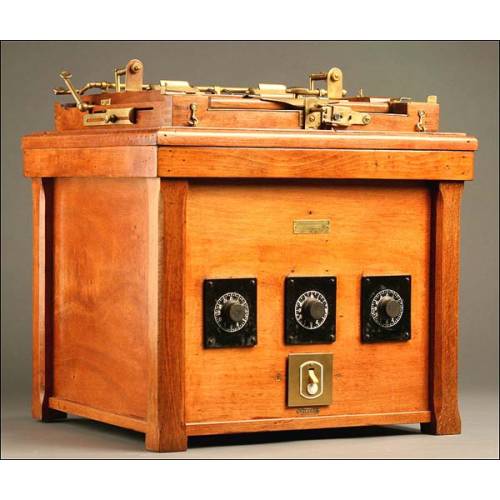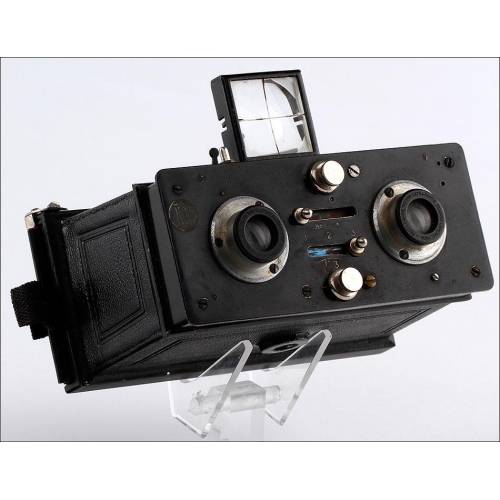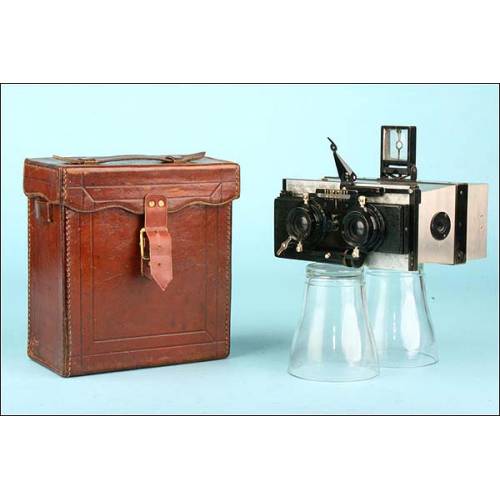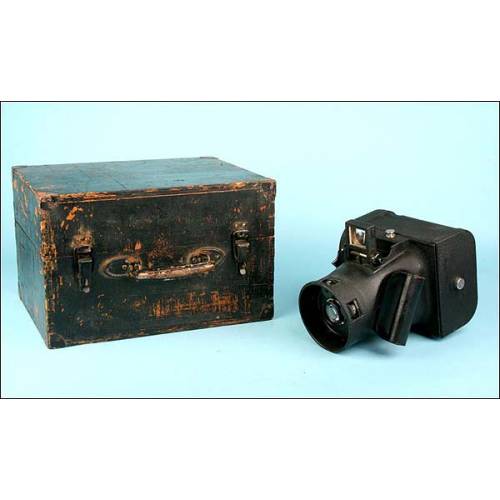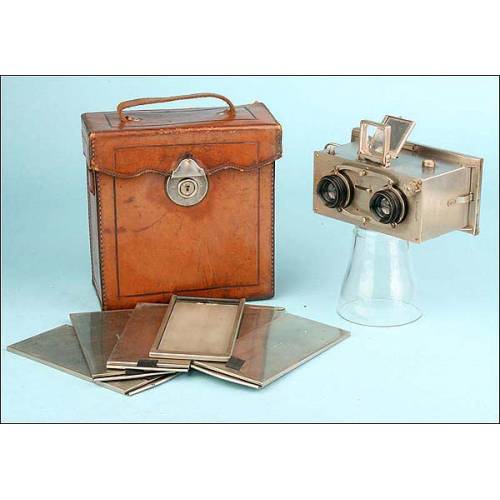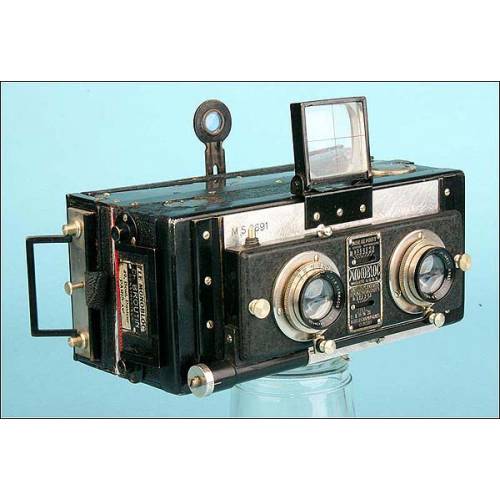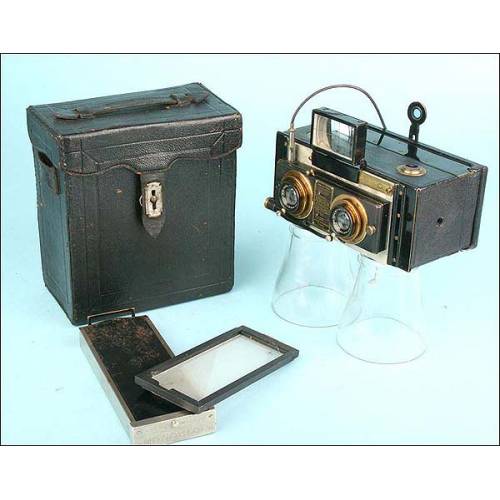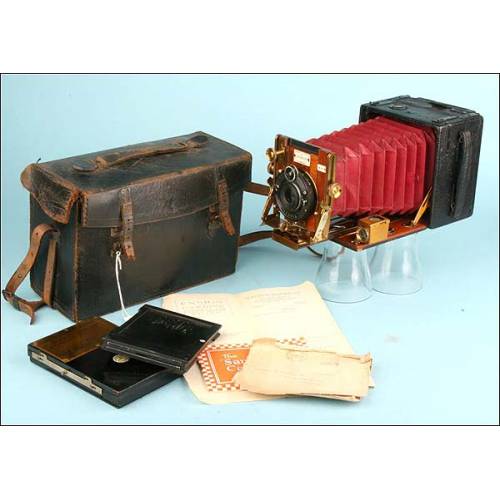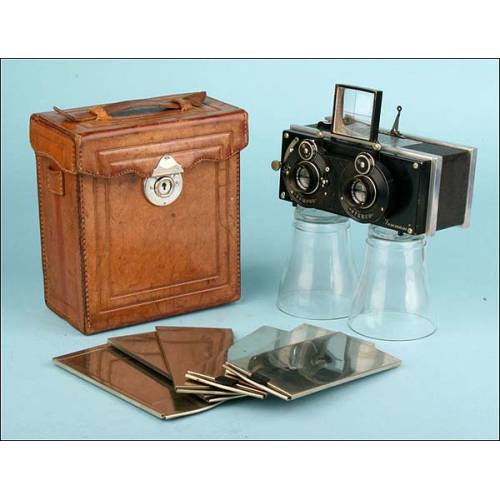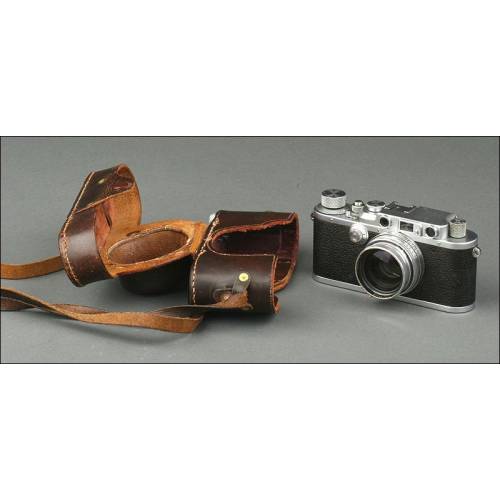J-388
Fantastic Russian Fed Camera, Exact Copy of Leica II, 1950s.
Russian Fed Camera, Exact Copy of Leica II, 1950s.
Sold!
Fantastic Russian Fed Camera, Exact Copy of the Leica II. Made in the 50's. Aesthetically beautiful, in silver metal with black leather protector, which has slight marks of use, but do not detract one iota of beauty to this magnificent camera. Russian engraved mark on the viewfinder and serial number: 495176. Finter-11 1:4 F=13,5 cm lens. It is in very good condition both aesthetically and functionally. This camera works perfectly, although it has not been serviced with film. The earliest known photo machines consisted of two simple wooden boxes: a wooden box carrying a lens, which slid inside the larger one, the sensitive plate being located at the back of the latter and on the opposite side of the lens. Towards the middle of the 19th century (ca.1895) the back and front parts of the camera were in two separate pieces, joined by means of a leather accordion, so that the two halves were moved apart or closer in order to be able to focus the image well. Little by little, the shape of the camera was innovated, finding a wide variety of models. The history of FED cameras is closely linked to the Soviet Revolution. In 1920, the M. Gorky Work Commune, directed by Makarenko, was created for boys orphaned by the Great War and the Bolshevik Revolution. In 1925 the prototype of a revolutionary camera for the history of photography appears in Germany: the well-known LEICA (Leitz Camera). In Russia it will be used by Rodchenko, who publishes it in the magazine Levyi Front Iskusstva, edited by Mayakovsky, becoming known in this country. When in 1932 the Leica II arrives on the market in Germany, in Kharkov they plan to manufacture photographic cameras copying the German model. A research department was created and in October the Fed 1 Original was launched with 3 units. A year later 30 more units of copies of the Leica Ia were produced, and the mass production of the same was studied, since they had the raw material and the theoretical preparation to achieve it. This Russian camera will be called FEDKA (Fed Kamera) and 1800 units were produced in 1934. The Fed 1 had an enormous success because it responded to the demand of the amateur and specialized public incorporating additional lenses, macros and different projectors. Beautiful camera for true collectors who know how to appreciate its value.

